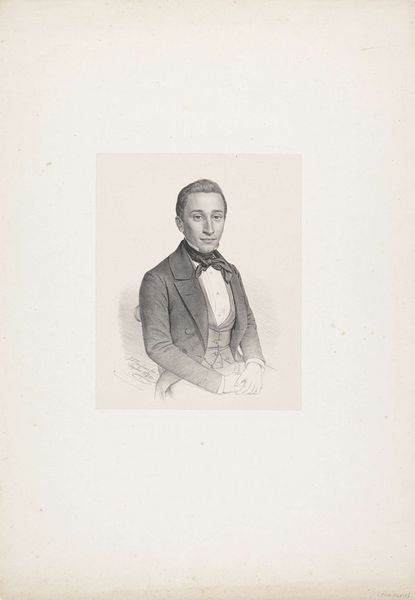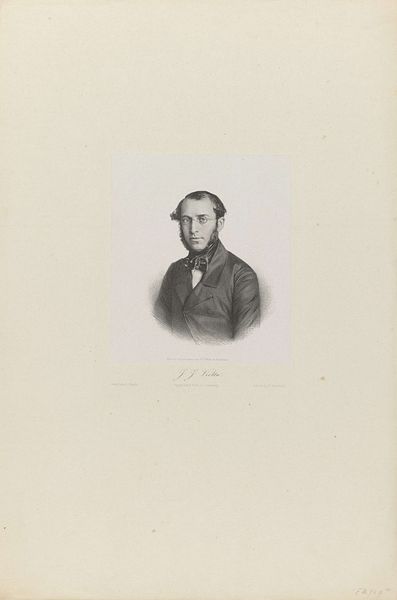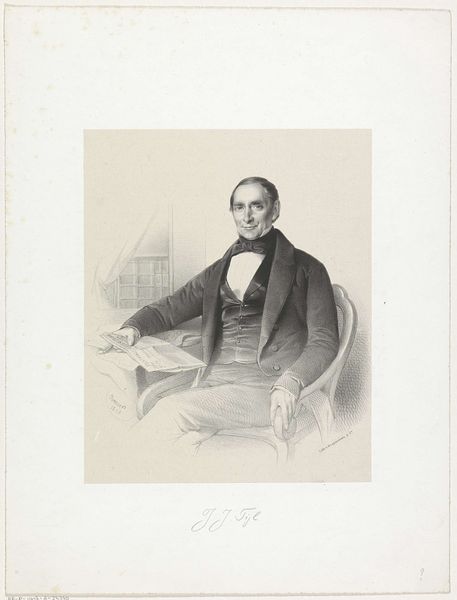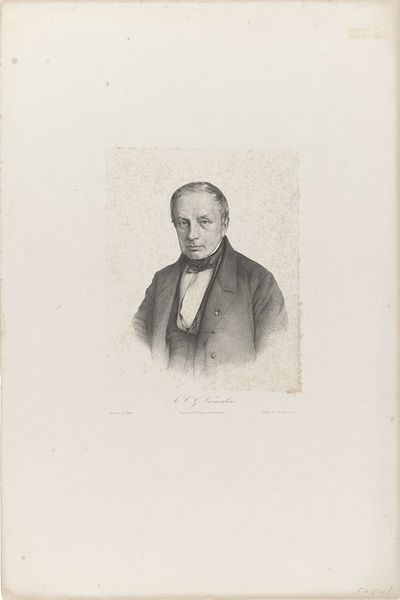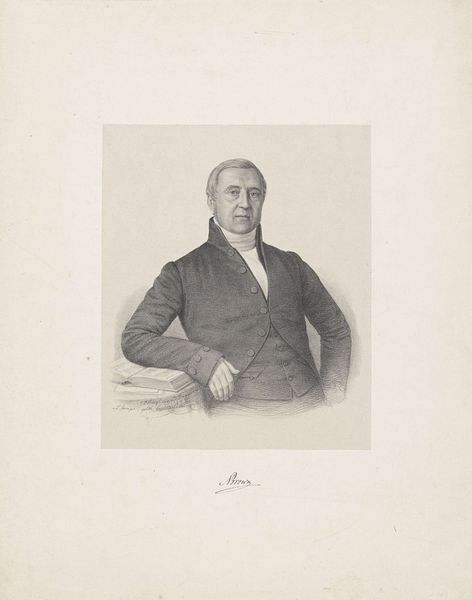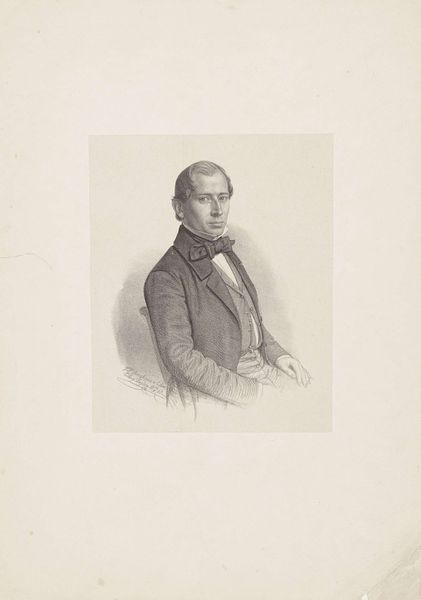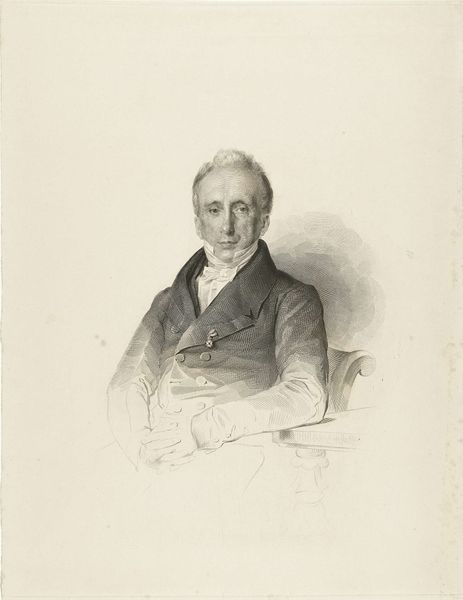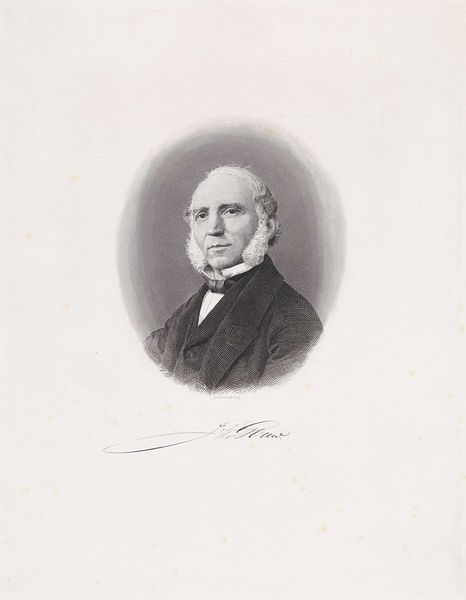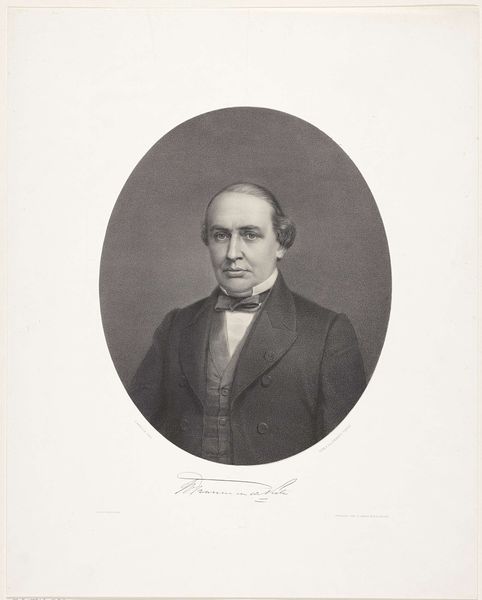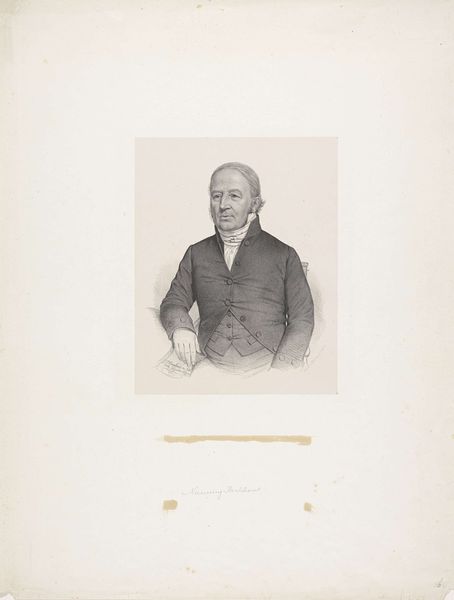
drawing, graphite
#
portrait
#
drawing
#
charcoal drawing
#
pencil drawing
#
graphite
#
portrait drawing
#
academic-art
#
graphite
Dimensions: height 384 mm, width 284 mm
Copyright: Rijks Museum: Open Domain
Johann Peter Berghaus made this portrait of W. A. Perk using lithography, a printmaking technique. The image comes into being through a chemical process, enabled by the porous surface of the lithographic stone. The essence of lithography lies in the skilled labor of the artist, preparing the stone and executing the image. The medium allows for a subtle modulation of tone that mimics drawing, yet it is inherently reproducible. Each print involves time, skill, and materials, tying it to the realities of labor and production. Lithography became important in the 19th century as a way to circulate images widely. So, in considering this portrait, we might reflect on the way it makes Perk available for viewing, and in turn, his own status as a man of means. Was he participating in the democratization of images, or simply enjoying a new form of elite representation? As always, thinking about materials, making, and context helps us understand an artwork's full meaning, blurring traditional lines between fine art and craft.
Comments
No comments
Be the first to comment and join the conversation on the ultimate creative platform.
